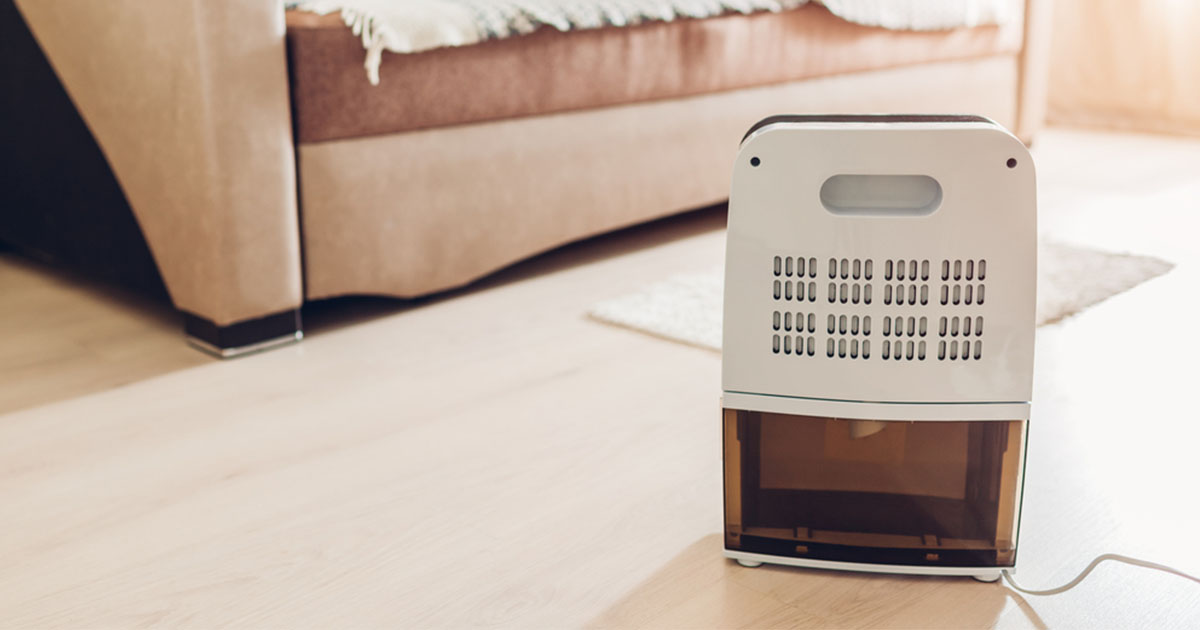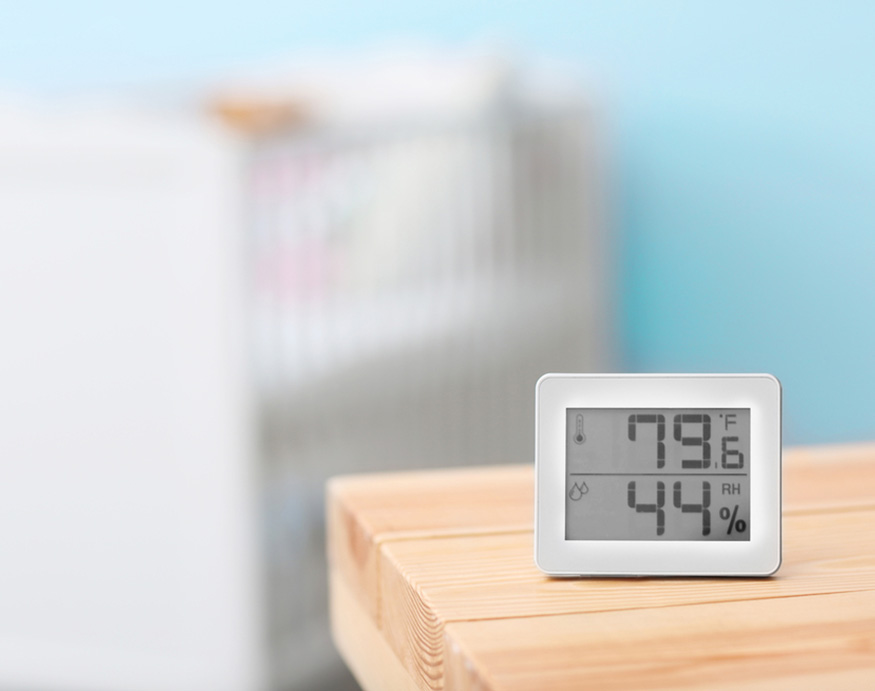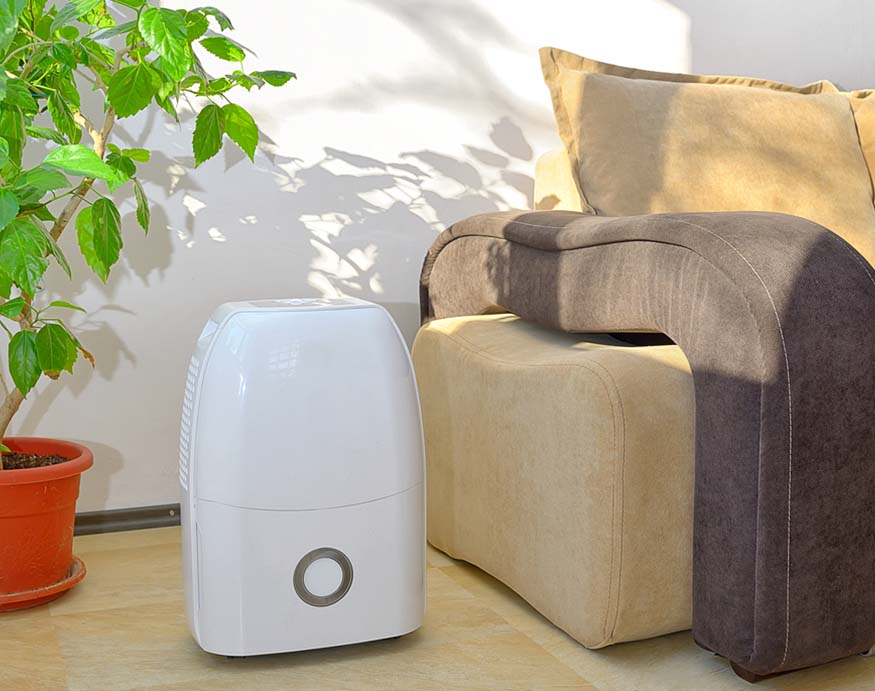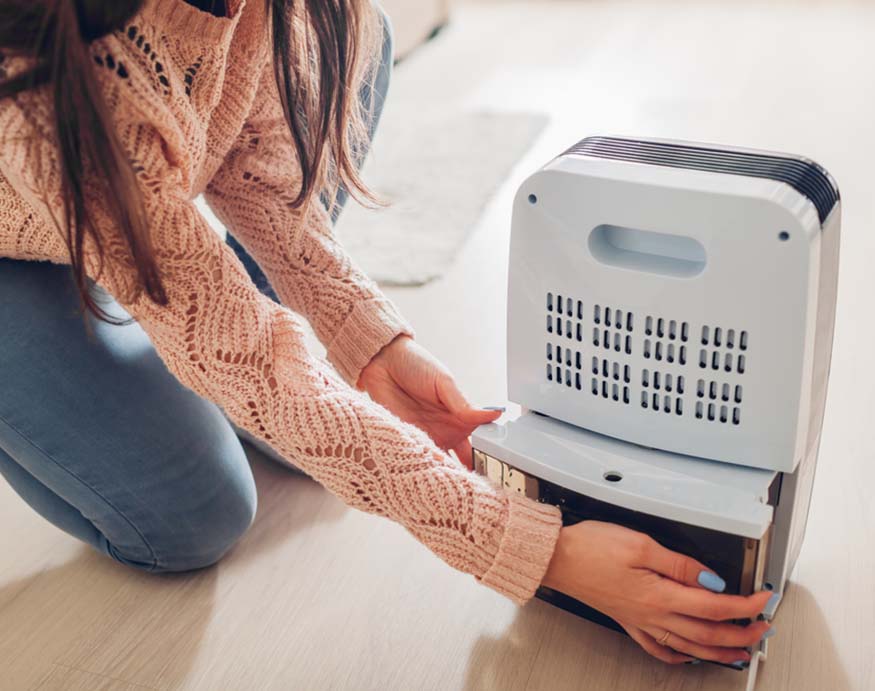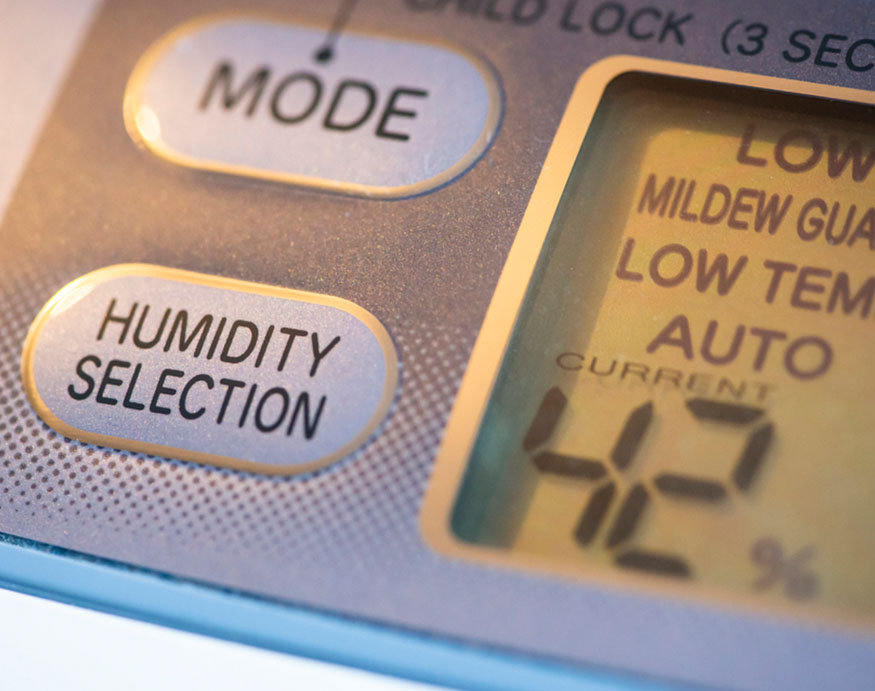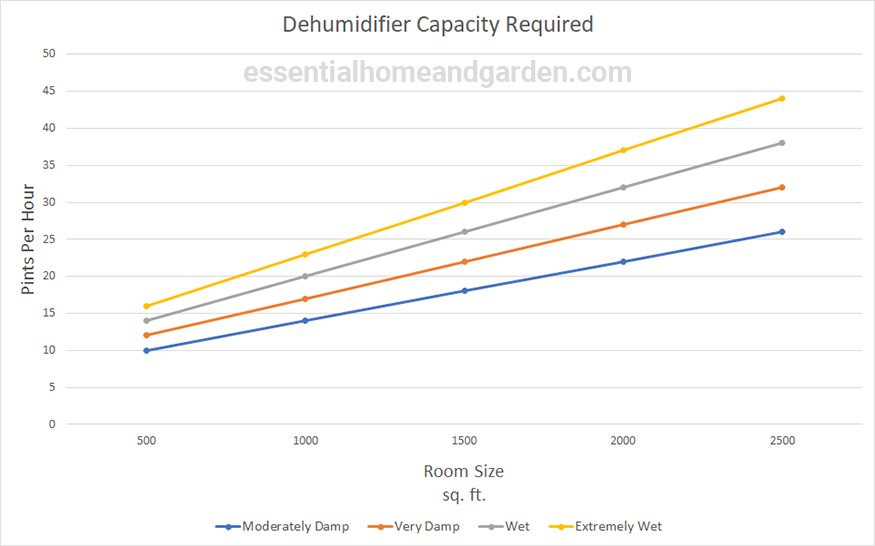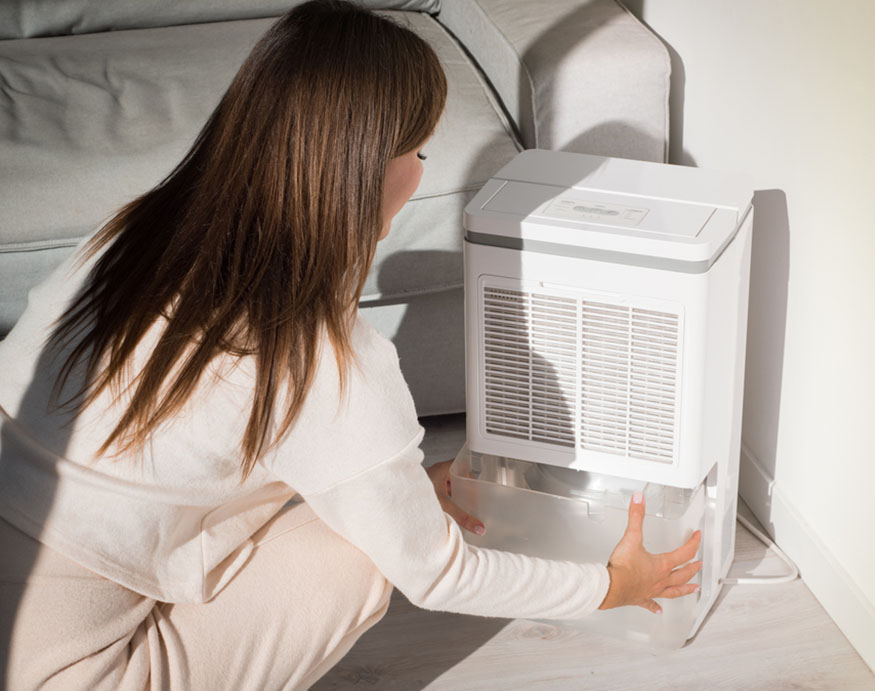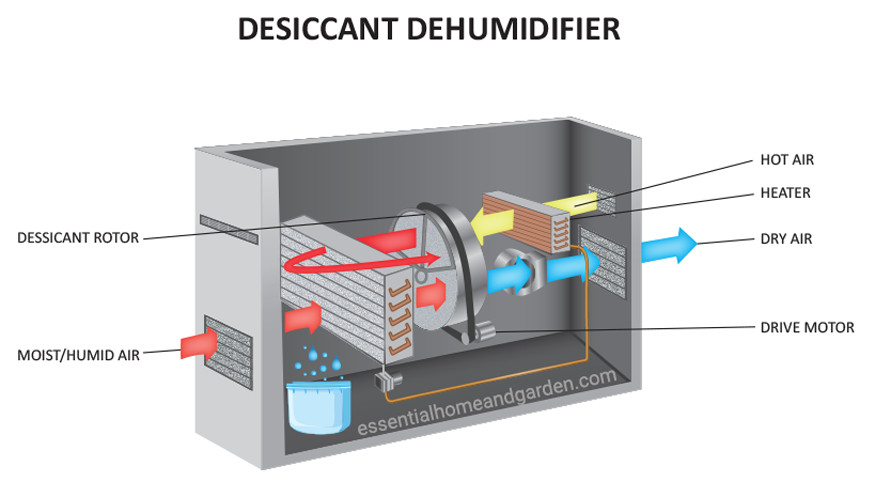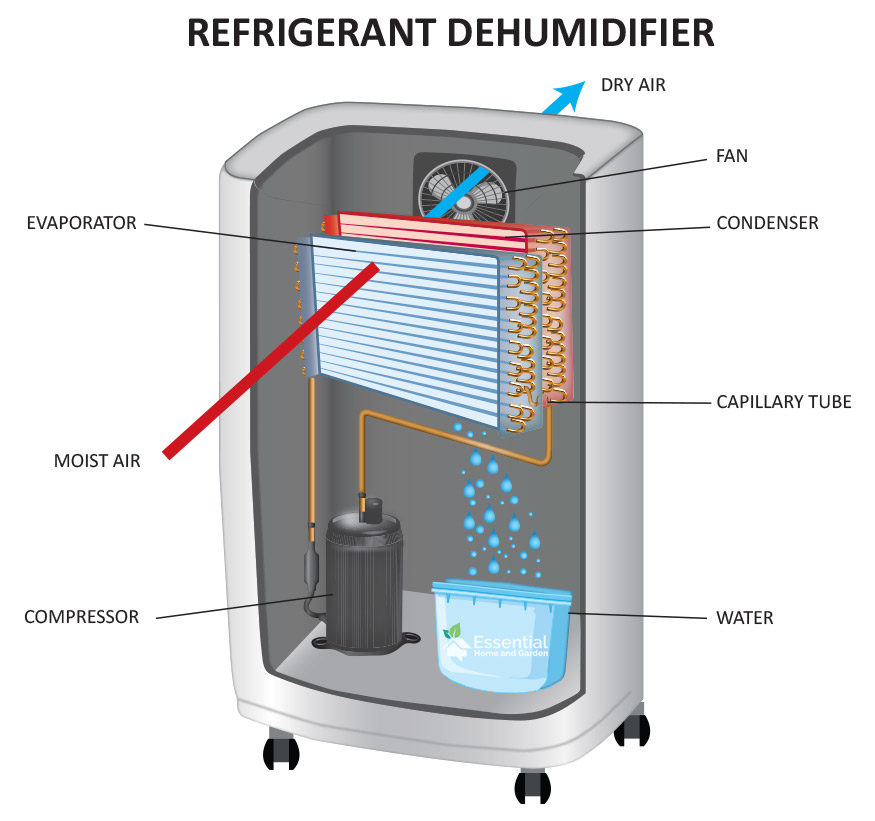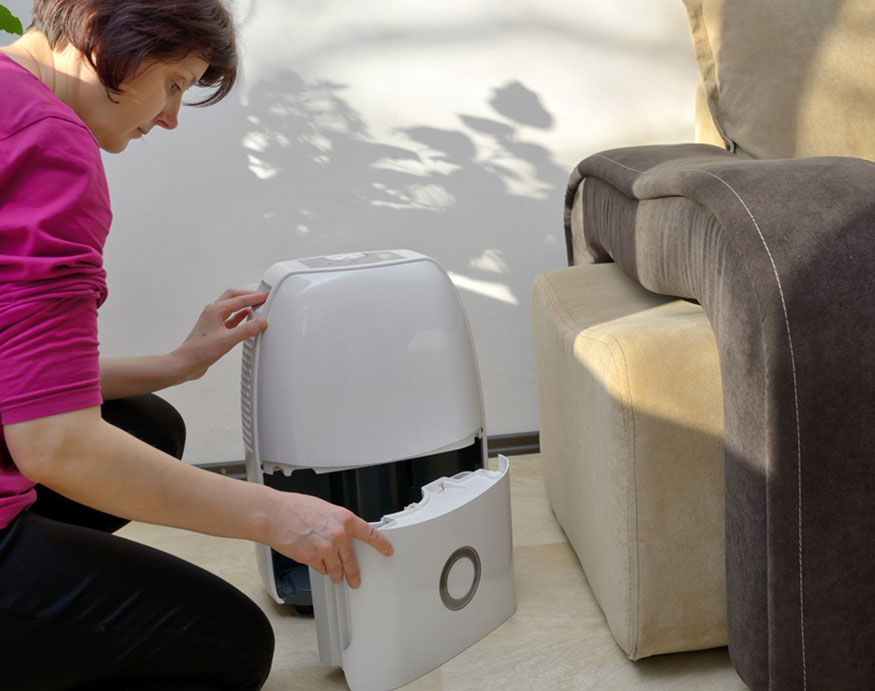Navigating the proper use of a dehumidifier can be a game-changer for maintaining optimal humidity levels in your home, enhancing both comfort and health. High humidity can lead to mold, mildew, and a host of respiratory problems, making it crucial to manage moisture levels effectively.
As an expert in home maintenance with years of experience in optimizing indoor air quality, I’ve put together these tips and practices for utilizing a dehumidifier efficiently. This guide is designed to help you understand the intricacies of dehumidifier operation, from selecting the right model for your space to regular maintenance routines.
Whether you’re combating dampness in your basement or ensuring your living areas remain comfortable and mold-free, follow these strategies to make your dehumidifier work harder for you.
Ideal Relative Humidity Levels in Your Home
When talking about humidity levels, you’re going to come across Relative Humidity (RH). It pertains to the actual amount of water vapor or moisture present in the air at any given temperature.
Now relative humidity can be a bit complicated to understand, and it isn’t that important when adjusting the humidity setting on your dehumidifier. So feel free to skip the next paragraph if you like.
Understanding RH: if the temperature in your home is at 68 degrees Fahrenheit, then the greatest amount of water vapor or moisture in the air is at 17.3 grams of water per cubic meter. In this case, if any room in your home reaches the maximum amount, then your RH is at 100%. If it’s at 8.7 grams of water per cubic meter, then your RH is at 50%.
In a perfect scenario, the ideal RH in a room should range between 30% to 50%.
Excess moisture in the air can create an unwelcome environment in your home. High humidity levels can make it difficult to breathe, cause mold or mildew to grow, and make your home feel damp and uncomfortable. A dehumidifier can help you reduce the amount of moisture in your home, creating a healthier and more comfortable environment. It works by drawing in the air, cooling it, and then releasing it back into the room at a lower temperature and humidity level. This process can help reduce the levels of moisture in the air, making your home more comfortable and improving the air quality in your home.
However, it is significant to note that RH levels cannot go above 40% in colder seasons because it prevents water droplets from forming on the windows and other glass panels.
Luckily, most dehumidifiers come pre-built with humidistats. These regulators allow you to program your device to the desired RH level. Once it has reached that level, it will automatically cycle your device on and off to maintain the programmed RH level.
If you find that your dehumidifier lacks a humidistat, then the best course of action would be to buy a hygrometer, a device that measures RH separately. You should hang it near or on top of your dehumidifier to monitor RH levels properly.
The Dangers Of Incorrect Humidity Levels
High Humidity Levels
Prolonged high humidity levels (above 50% during normal climates and above 40% in colder seasons) can often lead to a general feeling of stuffiness. It also makes your skin uncomfortably moist and leaves rooms smelling musty. Too high humidity can lead to unhealthy living conditions which can cause serious health complications, especially if you have pre-existing skin and respiratory conditions.
Breeding grounds for mold and bacteria are often found in damp, moist environments. This is why it is important to use a dehumidifier in areas such as basements, crawl spaces, and attics. The dehumidifier works by reducing the amount of humidity in the air, making it difficult for spores and bacteria to grow. This helps reduce the risk of mold growth and other types of indoor air pollutants, which can cause health problems. Additionally, dehumidifiers can help reduce the musty smell that often accompanies damp environments.
Note: If you do have problems with mold in your home, then you may also want to consider an air purifier.
Low Humidity Levels
On the other hand, when the RH level in a room plummets to 30% or lower, you can be subject to a host of irritating and costly problems such as:
- Dry skin and chapped lips (which can often crack or bleed)
- Lusterless and frizzy hair
- Dehydration leading to constant fatigue and headaches
- Peeling paint from walls and ceilings
- Warping furniture
how to use a dehumidifier
Understanding how to use a dehumidifier is crucial when it comes to achieving the ideal humidity in your home. This section of the article goes over using a dehumidifier as well as how to maintain it so it operates at peak efficiency.
Where to Place Your Dehumidifier
Proper placement is crucial for optimal and effective dehumidifier usage. As such, a good rule of thumb is to never place your dehumidifier around furniture and walls – unless they offer top-mounted air discharge.
In an ideal placement, you want at least 6-12 inches of space on all sides of your unit to prevent any unwarranted usage or consequences.
Likewise, it is also wise to follow these additional tips to make sure you get the most out of your dehumidifier:
- Keep your doors and windows closed when the unit is operational.
- Place it in the center of the room as much as possible to get the most efficient circulation.
- When working with larger spaces, place it as close as possible to the moisture source. Placing it too far may hinder the effects of your unit.
- Do not place it near any furniture as this may restrict the airflow of your unit. Unless, of course, it’s a top-mounted discharge type.
- Avoid placing it near any dust accumulating areas as this might clog your unit.
Did You Know: You can also get whole house dehumidifiers? Learn more here.
Empty the Water Tank
Like all appliances in your home, dehumidifiers need regular maintenance and cleaning to keep them in pristine condition and running in optimal efficiency. If there’s any tip a veteran dehumidifier owner will tell you right off the bat, it’s always to make sure to empty your water tank.
After all, dehumidifiers are designed to regulate moisture in your home. You don’t want them to keep the water removed from the air for too long.
Fortunately, most dehumidifiers now come with indicator lights that tell you when the water tank is full. Some also include a removable water bucket to make draining accumulated water vapor and moisture easier.
If you’re lucky or had the forethought to pick a model with a fitting that allows you to hook an external hose to the device, then you can opt to direct these to a floor drain or sump pump to keep maintenance levels at a bare minimum
However, a great tip to keep in mind is to regularly check your unit and empty it even when it’s not completely overflowing. This routine could not only help your dehumidifier work more efficiently but also reduce the chances of accumulation of water-borne bacteria and viruses.
Ideal Operating Temperature
Most dehumidifiers work the most efficiently in ideal operating temperatures of 70-90 degrees Fahrenheit. If, in any instance, the temperature in your home falls below 65 degrees Fahrenheit, then you may want to opt for specialized devices that cater to lower temperatures.
Essentially, you’re trying to avoid frost from forming in your dehumidifier’s coils. Unfortunately, when frost condenses in your device, this could negatively impact your compressor to cycle on and off repeatedly without even removing any water vapor or moisture from your home.
While some dehumidifiers come pre-built with anti-frost sensors that automatically shut them down when air temperature plummets, most of the time, we overlook this feature and opt for more energy-saving or portable variants.
In these cases, it is pertinent that you regularly check the temperatures in your home and observe if frost forms inside your dehumidifier. A simple routine of turning it off to defrost and switching it back on afterward could significantly help your dehumidifier run more efficiently – without having to buy a separate device altogether.
Match Your Dehumidifier With Your Room Size
It’s easy to get overwhelmed with the number of dehumidifiers available in the market. To make your selection easier, you may want to understand first the core issues you need to solve. Often, this relies on the capacity of your dehumidifier.
Dehumidifier capacities can usually be measured in pints per 24 hours and are determined by two main factors:
- The size of the room or space that needs to be dehumidified
- The pre-existing conditions in that room or space before dehumidification
Select Your Dehumidifiers Proper Water Tank Size
When choosing your dehumidifier, a good rule of thumb is determining what type of space they’ll be placed in. After all, not all units come with the same coverage area.
For Smaller Spaces
If you’re leaning towards smaller spaces like the bedroom, then standard-sized types can be just what you need.
These dehumidifiers can collect up to 15 liters of water per day and cover up to 2,000 square feet.
However, when placed in more damp areas like basements, it may not be the most efficient. You may have to keep on draining the water to keep it running, which you would naturally want to avoid.
For Mid-Range Spaces
For more basements and more damp areas of your home, a mid-range unit might be more appropriate.
These usually can collect up 20 liters of water and cover over 2,000 square feet of space.
As such, they will be more effective in removing musty odor, prevent mold and mildew, and even reduce the risk of prolonged water damage through condensation.
Learn more: The best dehumidifier for basements
For Larger Spaces
Now, if you live in a bigger home that spans bigger than 2,000 square feet, then opting for a dehumidifier that can collect 25-35 liters per day is a must since having a larger tank cuts back the draining frequency.
Choose the Correct Type To Achieve Ideal Humidity
As with all household maintenance, isolating the issue and taking the first step through research is the best way to figure out which type will be the most appropriate for your needs.
If you want to dry out a cold room, then a desiccant unit may be the one for you. On the other hand, for warmer rooms where moisture retention should be increased, a compressor variant can be more applicable in your home.
Alternatively, you can set up different dehumidifiers depending on the environment and humidity level needs.
Learn more: How dehumidifiers work.
Desiccant Dehumidifiers
By far, the cheaper option between the two is the desiccant type. These often come in relatively portable and mobile units that can be moved around easily from one room to the next. And they have lower noise levels than compressor types.
However, while they are lightweight, they tend to fare better in colder rooms as they utilize a desiccant wheel to absorb water in the air – like a sponge! It means they do better in removing moisture rather than regulating it.
It uses internal heating to regenerate the desiccant present inside to repeat the cycle of moisture absorption repeatedly. So, these dehumidifiers are better used in damp rooms like bathrooms for basements rather than living rooms and bedrooms.
Refrigerant Dehumidifiers
A Compressor dehumidifier is one of the more popular options for homeowners today. They work by creating cold surfaces to regulate warm air in the room.
Simply put, once warm air comes in contact with the unit’s cold surface, it starts the process of condensation to separate the water from the circulating atmosphere.
As they don’t use internal heating to regulate humidity levels, they use lower power consumption than desiccant types, which makes them the more popular option for most homeowners.
However, one key factor that you also have to understand is that they fare better in warmer rooms as they tend to give off cooling effects. Something that may not be optimal during colder seasons when your goal is to keep your rooms warm and toasty.
Note: A less effective but still viable option is a desiccant dehumidifier such as Damprid.
Set Your Dehumidifier Properly
Each dehumidifier works differently, and learning how they operate is key to balancing out the humidity levels in different areas of your home. After all, why spend all that money on a costly appliance just to misuse it?
To get the most optimal use from the get-go:
- Plugin your dehumidifier and adjust the setting according to the manual (please, read it.)
- Let your unit run through several cycles to warm it up.
- Empty the water tank frequently. You don’t have to wait for it to fill up fully.
- Clean the parts of your dehumidifier to reduce the build of dust and debris.
Likewise, selecting the proper settings can significantly impact not only your electric consumption bills but also make your dehumidifier run more smoothly and require less maintenance. As such, you may want to consider running by other settings available such as fan speed, energy-saving modes, and RH levels via humidistats.
Newer models usually come with very easy-to-navigate control panels and straightforward settings such as dryness, humidity, and energy consumption levels. However, older models tend to have vaguer controls. Although, a quick flip through your manual should answer all your questions for proper settings.
Cleaning Your Dehumidifier Regularly
Cleaning the parts of your unit is just as crucial as draining the water because it will inevitably accumulate dust and debris over time. Separate removable parts from the dehumidifier (please check your manual) and clean them thoroughly with a washcloth and some mild soap or your safe DIY cleaner of choice.
For thorough cleaning, watch this video below:
A Dehumidifier’s Role in Your Home
Whether you’re looking to alleviate allergies and respiratory problems or prevent the onset of mold and water damage, dehumidifiers are great additions to any home. They provide a variety of benefits that are likely to offset their cost and power usage.
If you think about it, preventing additional repairs or doctor’s appointments from humidity level issues can save you more in the long term. Just make sure to plan, research and understand howto use a dehumidifier before you go straight for that shiny, expensive model in your wishlist.
